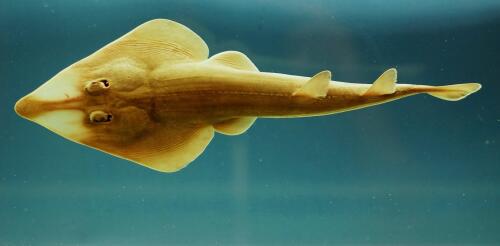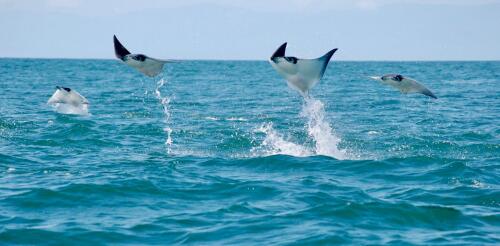Rays
All of the saltwater bodies on Earth make up one big ocean. But within it, there is infinite variety – just ask any scuba diver. Some spots have more coral, more sea turtles, more fish, more life. “I’ve been diving in many places around the world, and there are few locations like the Fuvahmulah Atoll in the Maldives,” Amanda Batlle-Morera, a research assistant with the Important Shark and Ray Areas project, told me. “You can observe tiger sharks, thresher sharks, scalloped hammerheads, oceanic manta rays and more, without throwing out bait to attract them.” Identifying areas like Fuvahmulah that are especially important to certain species is a long-standing strategy for protecting threatened land animals, birds and marine mammals, such as whales and dolphins. Now our team of marine conservation scientists at the Important Shark and Ray Areas project is using it to help protect sharks and their relatives. I am a marine conservation biologis...
“Shark!” When you hear this word, especially at the beach, it can conjure up images of bloodthirsty monsters. This summer, my colleagues and I are eager to help the public learn more about these misunderstood, ecologically important and highly threatened animals and their close relatives – rays and chimaeras. As a marine biologist focused on conserving sharks, I want people to know that an estimated one-third of them are at risk of extinction. Second, there’s an amazing variety of species in an astounding variety of shapes sizes and colors, and many of them get very little attention. Here is an introduction to a group of fishes that are at extremely high risk of extinction, and also delightfully weird: the rhino rays, named for their elongated noses. Scientists tag endangered sawfish off Florida’s west coast to identify and protect their habitats and educate the public about them. Motley shapes Rhino rays a...
Many sharks and rays are known to breach, leaping fully or partly out of the water. In a recent study, colleagues and I reviewed research on breaching and ranked the most commonly hypothesized functions for it. We found that removal of external parasites was the most frequently proposed explanation, followed by predators chasing their prey; predators concentrating or stunning their prey; males chasing females during courtship; and animals fleeing predators, such as a ray escaping from a hammerhead shark in shallow water. We found that the highest percentage of breaches, measured by the number of studies that described it, occurred in manta rays and devil rays, followed by basking sharks and then by eagle rays and cownose rays. However, many other species of sharks, as well as sawfishes and stingrays, also perform this behavior. A breaching white shark surprises researchers off Cape Cod, Massachusetts. Why it matters It takes a lot of ene...


